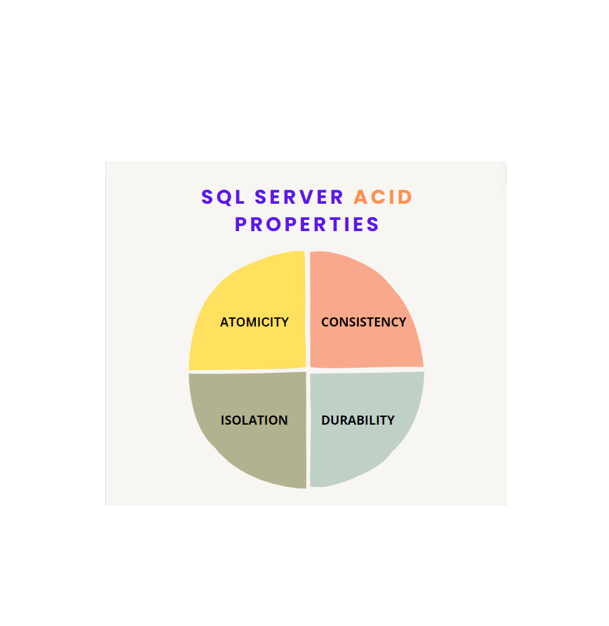
ACID properties are essential for ensuring reliable and consistent transactions in SQL Server databases. Here’s a simple explanation of each property:
1. Atomicity
Definition: Atomicity ensures that each transaction is treated as a single unit, which either completely succeeds or completely fails.
Example: Imagine transferring money from one bank account to another. The transaction involves debiting one account and crediting another. Atomicity ensures that both actions occur fully, or neither occurs. If something goes wrong (e.g., a system crash), the transaction will be rolled back, and neither account will be changed.
Turn Knowledge into Expertise - Join Our SQL Server Developer Course Today!
2. Consistency
Definition: Consistency ensures that a transaction brings the database from one valid state to another, maintaining database rules and constraints.
Example: If there’s a rule that account balances cannot be negative, consistency ensures this rule is never violated. After any transaction, all data must conform to the defined rules. For instance, after transferring money, the total amount in both accounts combined should remain the same.
3. Isolation
Definition: Isolation ensures that transactions occur independently of each other. Intermediate states of a transaction are invisible to other transactions until completion.
Example: Consider two people transferring money between accounts simultaneously. Isolation ensures that the transactions don’t interfere with each other. Each transaction will be unaware of the other until both are complete, avoiding potential conflicts or inconsistencies.
4. Durability
Definition: Durability ensures that once a transaction is committed, it remains so, even in the event of a system failure.
Example: After a successful transfer of money, the changes are permanently recorded. Even if the server crashes immediately after the transaction, the new account balances will be preserved when the system recovers.
Boost your data career by enrolling in TrainingHub.io's Data Analyst courses in Toronto, featuring industry-relevant curriculum and expert instructors.
Summary with an Example Scenario
Imagine a simple transaction in a SQL Server database where you are transferring $100 from Account A to Account B:
- Atomicity: If either the debit from Account A or the credit to Account B fails, the entire transaction fails, and neither account is changed.
- Consistency: The database ensures that the total amount of money before and after the transaction remains the same, and no database rules (like no negative balances) are violated.
- Isolation: If another transaction tries to access Account A or B while the transfer is happening, it won’t see the intermediate state of the accounts; it will either see the state before or after the transaction.
- Durability: Once the transfer is successfully completed and committed, the changes are permanent, even if the system crashes immediately after.
These properties work together to maintain the reliability and integrity of the database during transactions in SQL Server.
From Blogs to Brilliance - Advance with Our SQL Server Developer Course! TrainingHub.io offers IT online courses in Canada that focus on the most in-demand skills in the tech industry.
Suggested blogs
Recent blogs

21 February 2025
|
06 February 2025
|